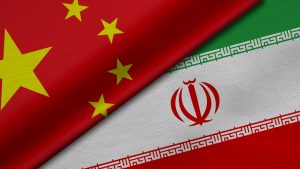In the grand theater of global geopolitics, a complex narrative is unfolding, weaving together the fates of the Middle East, the Taiwan Strait, and the burgeoning superpower rivalry between China and the United States. This intricate saga, underscored by China’s rising influence, Iran’s regional ambitions, and Taiwan’s precarious position, offers a profound glimpse into the shifting dynamics of international power. At the heart of this geopolitical drama lies China’s increasingly assertive global posture.
Beijing, leveraging its deepening ties with Tehran, appears to be playing a long game, positioning itself as a pivotal player in both the Middle East and the Asia-Pacific regions. This strategy is multifaceted, involving not just economic partnerships but also significant advancements in strategic and defense cooperation. China’s relationship with Iran, a key player in the Middle East, is particularly intriguing. Driven by mutual interests – China’s insatiable energy needs and Iran’s quest for economic and diplomatic support amid international sanctions – this alliance has potential implications far beyond bilateral trade.
It poses a strategic challenge to U.S. interests, especially in the context of Iran’s use of proxy forces in the region, which has long been a source of instability for key American allies like Israel and Saudi Arabia. China has emerged as Iran’s primary diplomatic shield, providing crucial support that has blunted the impact of international sanctions on Tehran. China’s role in aiding Iran’s military modernization, through the transfer of military technology and assistance in nuclear program development, underscores the strategic depth of their relationship.
Such developments have inevitably raised concerns in Washington, as they complicate U.S. efforts to curb Iran’s nuclear ambitions and its influence in the Middle East. The Sino-Iranian dynamic is a shared narrative of resistance against perceived Western hegemony.
Iran, with its extensive network of proxies, has the capability to destabilize regional U.S. allies significantly. This potential for disruption, if left unchecked or tacitly supported by Beijing, could afford China a powerful bargaining chip in its dealings with Washington. The hypothesis that China could exploit this situation – allowing tensions to escalate in the Middle East to later negotiate concessions in the South China Sea and a reduced U.S. military presence around Taiwan – cannot be ignored.
This strategy, while plausible, is laden with risks and complexities. China’s alignment with Iran’s destabilizing activities could impact its global standing and relations with other Middle Eastern countries. Additionally, it assumes that Iran would be amenable to adjusting its regional tactics under Chinese influence, a premise that is not guaranteed given Tehran’s emphasis on sovereignty.
Within Iran, there’s a nuanced debate over its foreign policy trajectory. While there’s a clear and growing tilt toward China, Tehran is conscious of its revolutionary ethos and the importance of maintaining a degree of autonomy in its international relations. This internal dynamic suggests a cautious approach to its full alignment with China, seeking benefits while avoiding complete dependence. However, still being suffocated economically by most economic powerhouses other than China, Iran has few options regarding escaping dependency from Beijing. The current status of ties already put Iran in a situation in which without China, the country’s economy would collapse.
Parallel to the Middle East is the increasingly volatile situation in the Taiwan Strait. China’s “gray zone” tactics, marked by military and economic coercion, are designed to slowly erode Taiwan’s resolve without provoking a direct military confrontation with the United States and its allies. This approach has intensified, particularly following high-profile incidents such as former House Speaker Nancy Pelosi’s visit to Taipei, which Beijing perceived as a direct challenge to its claims over Taiwan.
The further and deeper the pressure that China applies on Taiwan, the less appetite Beijing has to hold back Tehran from applying pressure upon U.S. allies through the proxies of the Iranian regime.
For the United States, these developments present a complex challenge. Balancing commitments to Middle Eastern allies with strategic interests in the Asia-Pacific region requires a deft and nuanced foreign policy approach. The prospect of China using its relationship with Iran as leverage in broader geopolitical negotiations adds an additional layer of complexity to Washington’s strategic calculus.
The interplay between China, Iran, Taiwan, and the United States forms a dynamic and intricate geopolitical puzzle. As Beijing asserts its influence across these diverse theaters, the responses of Washington, Taipei, and Tehran will shape the contours of international relations in this era of great power competition. The strategic choices made in the coming months will have profound implications for global stability and the future of international diplomacy.
































